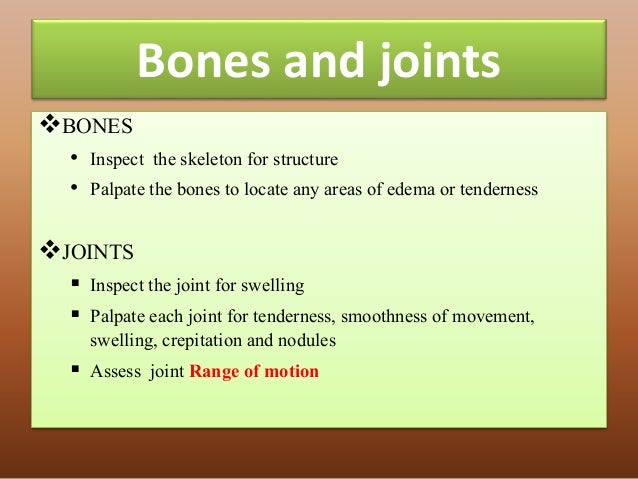


In children, common foreign bodies include little toys and beads. Describe the appearance and location of swelling and foreign bodies. Describe any discolouration of the mucosa or the colour and amount of any discharge/bleeding. The nasal mucosa is normally pinkish red in colour with no discharge or bleeding.Discard the probe cover in the garbage when done. Use a large/wide cover for the otoscope probe and ensure that you do not touch any part of the nose with it as the mucosa is sensitive and highly vascular. Use a penlight or the light source from a otoscope to illuminate the nasal cavity.Ask the client to tilt their head gently backwards while you use your finger to elevate the tip of their nose.Inspect the nasal cavity and mucosa of the nose for colour, discharge/bleeding, swelling, foreign bodies, and malformations.Describe the appearance and location of any abnormalities. Normally, the nose is symmetrical with no swelling or malformations.Inspect the contour and external surface of the nose for symmetry, swelling, and malformations such as masses and lesions.

Describe the appearance and location of any discolourations noted. Normally, the nose is the same colour as the rest of the face with no discolourations such as redness.Inspect the external surface of the nose for colour.It is important to don gloves as you may be in contact with bodily fluids such as nasal discharge. Genitals and anus. Open passage for of urine and stool and normally formed male and female genitals.Inspection and palpation of the nose should be performed standing directly in front of the client while they are sitting upright on the examination table or a chair. Heart sounds and femoral (in the groin) pulses Mouth. Roof of the mouth (palate), tongue, throat. The open soft spots between the bones of the baby's skull (fontanels)įace. Eyes, ears, nose, cheeks. Skin. Color, texture, nails, presence of rashes.Īppearance, shape, and shaping of the head from passage through the birth canal (molding) General appearance. Physical activity, muscle tone, posture, and level of consciousness or whether or not an infant is awake and alert. Normally an upper number (systolic) between 60 and 80, and a lower number (diastolic) between 30 and 45. It may be much slower when an infant sleeps.īreathing rate. Normally 40 to 60 breaths per minute.īlood pressure. Heartbeat. Normally 120 to 160 beats per minute. Temperature. Able to maintain stable body temperature of 97.0☏ to 98.6☏ (36.1☌ to 37☌) in normal room environment. Physical exam of a newborn often includes assessment of the following: The healthcare provider also looks for any signs of illness or birth defects. Each body system is carefully checked for signs of health and normal function. A complete physical exam is an important part of newborn care.


 0 kommentar(er)
0 kommentar(er)
